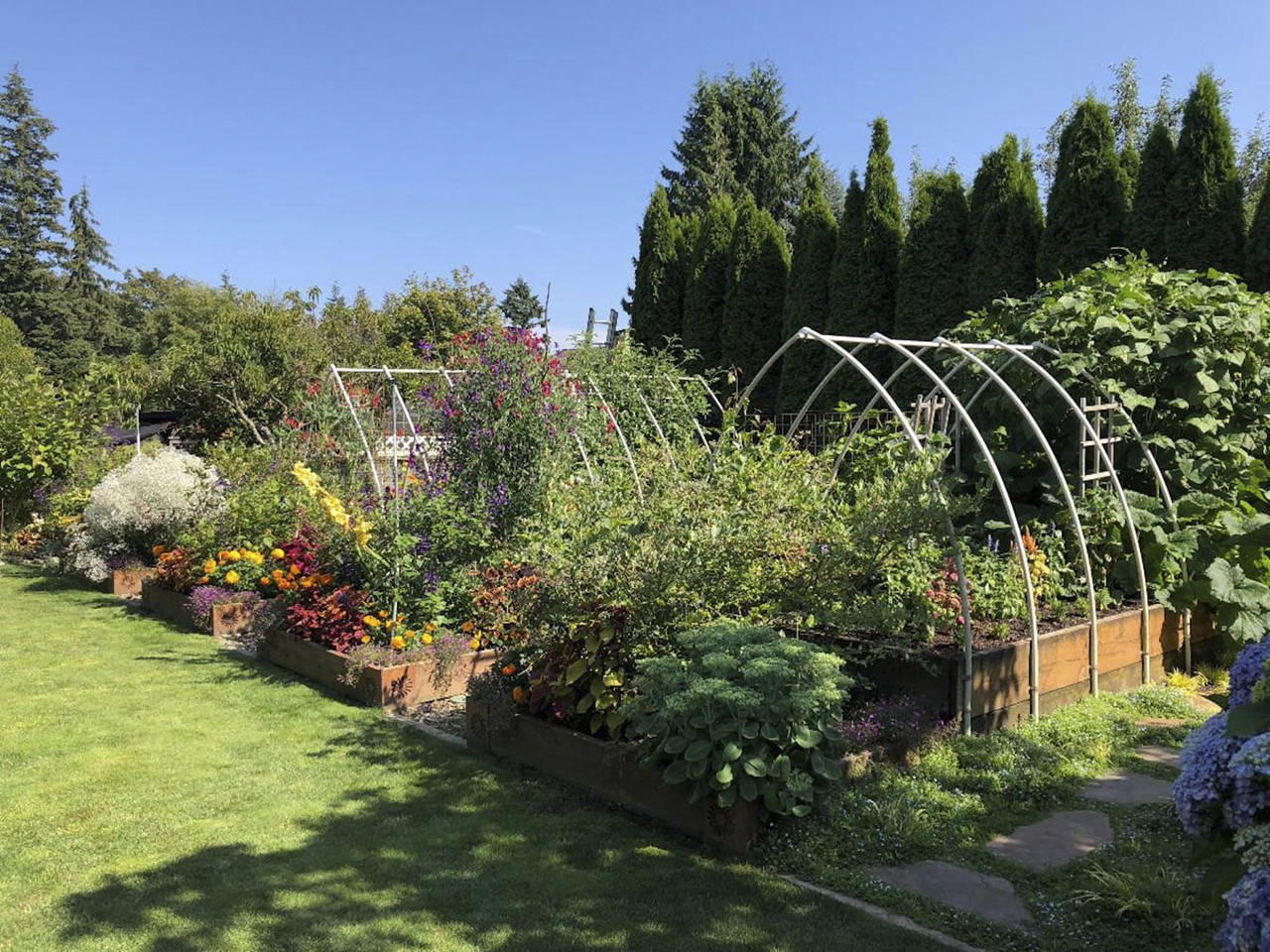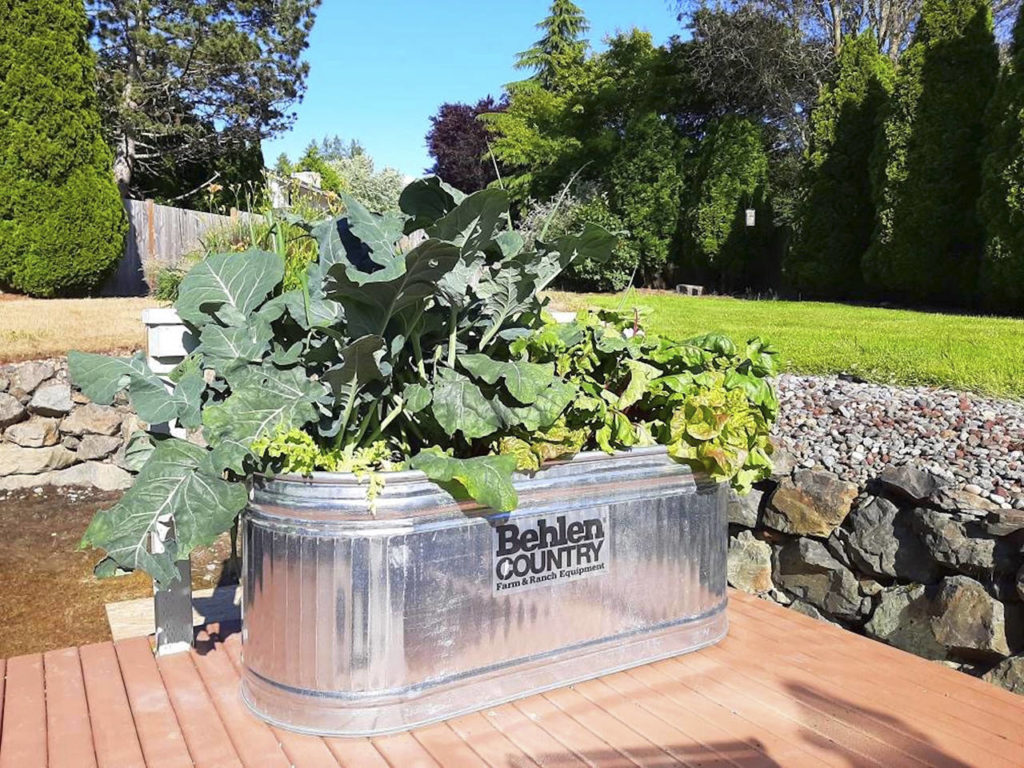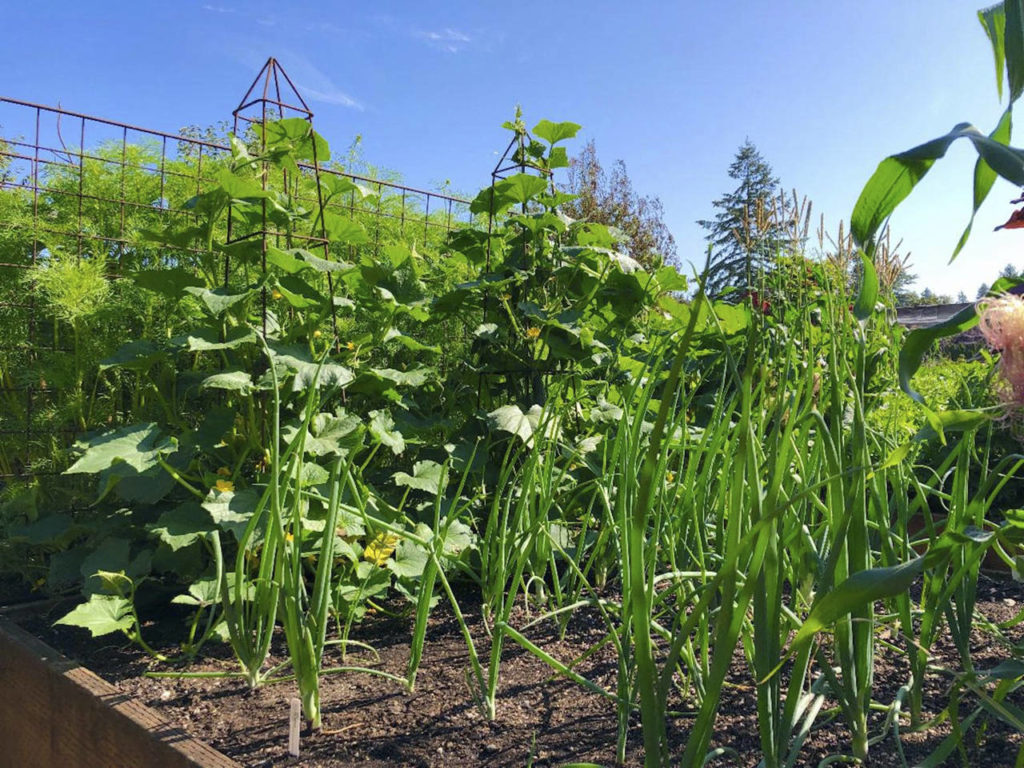For most of us that live in the Northwest, we are faced with either sandy soils or glacial till.
Sandy soils drain so fast it is impossible to keep them watered, and that hateful stuff known as glacial till, which is nothing more than rocks and clay that was compressed under umpteen feet of glacial ice several thousand years ago, is impossible to get a shovel into and doesn’t drain worth a hoot.
Both of these extremes can be modified with the addition of copious amounts of organic matter and, in the case of landscaping, it is definitely the best path to follow. But, when it comes to growing vegetables (or flowers, for that matter), building raised beds works a lot better.
Raised beds can be built with new materials such as treated lumber, concrete blocks or recycled products, like railroad ties or broken sidewalk pieces. If you are concerned about using ties or treated lumber that contain chemicals, you can always line the inside of the boards with plastic so the soil does not come in contact with the wood.
Whatever you end up using, make your raised beds at least 10 to 12 inches high — and higher if you can afford it. As for its width dimensions, 4 to 5 feet wide should be the maximum, so you can still reach to the center from either side. The length is entirely up to you and your available space.
Raised beds work their magic in several ways. For starters, they let you get a jump on the season. There are two reasons for this: First, because you are importing soil into the beds, you can add a fast-draining soil with lots of sand and organic matter that will dry out earlier then our native glacial tills. (If your beds are small, then just purchase some good quality potting soil labeled for use in raised beds.For larger projects, consider bulk material — it’s a lot cheaper.) The second reason it helps you get a jump on the season is that as the sun shines on the sides of your beds, it warms the soil much faster. The warmer the soil, the sooner you can plant.
Regardless of whether you use bagged or bulk soil, you will want to add additional fertilizer to provide the needed nutrients for optimal growth. A complete organic fertilizer labeled for veggies is the easiest way to go, but I also like to supplement my raised bed soils with some lime and trace elements. Also, a healthy dose of worm castings adds to the microbial content of the soil.
Once you’ve got your soil ready to go, it’s time to plant. This is the month when I start planting my cool-season vegetables — by “cool season” I mean the vegetables that like to grow in the early spring before it gets hot. Most root crops, like beets, carrots, onions and potatoes, get planted now. Leaf crops like lettuce, romaine, Chinese cabbage and spinach also do best now. Cabbage, cauliflower, broccoli and Brussels sprouts need to be planted now. Finally, don’t forget that peas do best in the cool season.
Once the soil temperatures rise above 55 degrees, then it is safe to put in the warm-season vegetables. You can purchase a soil thermometer for under 10 bucks if you want to know exactly when that magic event happens, but practically speaking, mid- to late May is usually a fine time to plant tomatoes, peppers, eggplant, beans, corn, cucumbers and squash.
You will find that most of your cool-season crops will have been harvested by then, so you will have the room you need for your new warm-season veggies. As a side note, if you really want to grow basil, don’t plant it before June unless you enjoy watching it rot in the ground.
A somewhat hidden magical trait of raised beds is that you will find your back doesn’t hurt quite as much, since you won’t have to bend over as far to garden. I’ve always thought that if I could increase the height of my beds to 3 feet tall, all I would have to do would be to lean over them and graze like a cow. I’ll let you know if that ever happens.
Finally, one last benefit of raised beds is that because we use a manufactured soil with lots of organic matter, it is incredibly easy to pull weeds — and who doesn’t like that concept?
Please remember, building raised beds and filling them with soil isn’t exactly a cheap proposition. Using free, recycled material will keep the cost down, but never skimp on the soil. After your initial investment, you will need to continue to replenish the soil to add fresh nutrients back in the soil every season, but it will be a fraction of your original costs.
Don’t be fooled — there are a lot of benefits that come along with this project, too. It’s a great family project, one that is both useful and functional for many years. You also gain the peace of mind knowing exactly where your food came from and how it was grown safely and organically. Stay safe and keep on gardening!
Steve Smith is the owner of Sunnyside Nursery in Marysville and can be reached at sunnysidenursery@msn.com.
Two free classes
Sunnyside Nursery’s free gardening classes are online for now. A “Conifer Kingdom” class is scheduled for 10 a.m. March 13, followed by “New & Exciting for 2021” class at 11 a.m. on March 14 via Zoom. With registration, you’ll receive a Zoom link to attend the online class. For more information or to sign up, visit www.sunnysidenursery.net/classes.
Talk to us
> Give us your news tips.
> Send us a letter to the editor.
> More Herald contact information.



























